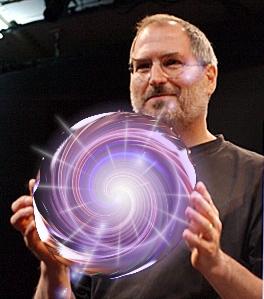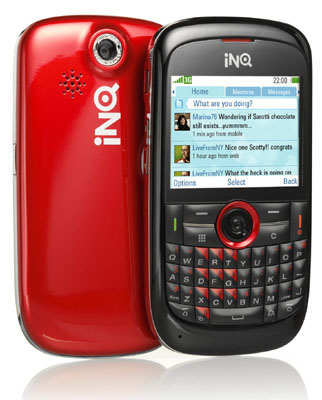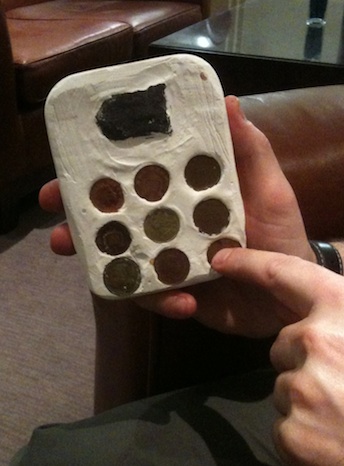Original URL: https://www.theregister.com/2010/11/04/mobile_ui_what_next/
What's next for the mobile UI?
Industry's wisest heads ponder. We take notes.
Posted in Networks, 4th November 2010 13:17 GMT
How things have changed. Fifteen years ago attendees at a select mobile conference might have been found sparring over spectrum allocation and control channels. Back then, 3G loomed large, and huge geo-political battles were being fought. Today the talk is - how do you make it all work nicely?
I thought that by eavesdropping on Informa's first Smart Devices and Mobile User Experience summit in London this week, I might be able to find out. There was a good mix of real phone designers and their clients and partners from Google, Intel, and of course the mobile networks.
Is everything going touchscreen?
It's evident that the effects of Apple's dramatic entry into the mobile business are still being digested. The importance of the user experience is regarded as the difference between success and failure, and merely having a touch screen isn't enough. Almost four years ago I expressed some reasons why Apple's entry into the business should be a Good Thing. The established players had become "lazy and complacent, [gone] down blind alleys, or [standardised] on horrible designs and feature sets." The iPhone should raise the bar for design.
Well, there's a rare mobile prediction that comes true.
Just as I'd hoped, the iPhone increased the standard of design and ease-of-use across the board. Along the way, not everybody had been able to keep up.

Not just a shiny new thing
Phone designer Nick Healey said he thought the iPhone was the first smartphone that people could actually use. He'd attended smartphone conferences for almost a decade. Until the iPhone appeared, people had always predicted a mass market was 18 months away.
As for the Android UX, views were decidedly more mixed. No one disputes Android's phenomenal success. It has gone gangbusters throughout 2010, toppling Apple from No 1 spot in the UK in September, on one set of stats I saw presented. Symbian's share has crashed from 40 per cent to 12.9 per cent - putting it in fourth place behind RIM. But you will probably have guessed that just from walking into Carphone Warehouse at any point in 2010. The figures are monthly, and may reflect an empty product pipeline - since refreshed with the new Symbian^3 devices.
But was the vanilla UI good enough? Some said it was good. Others said it needed the OEM-added layers such as HTC Sense. Others maintained that even with the manufacturer's UIs it was still too "geeky" for the mass market. Healey gave me an example of HTC's Sense UI.
"HTCs have a 'Favorite people' widget on one Home screen - you swipe up and down to scroll your list of people. Great. But if you tap on it, but happen to pause a fraction of a second before the swipe down - a normal user will be thinking 'is Fred Up or Down, oh yes, Down <swipe>" - the widget itself vanishes."
Ken Ken Johnstone from INQ said he really thought it a bit of shame that essential tasks - such as hanging up a call - were harder than they were 10 years ago.
What about other users?
There was much collective chewing of the cud over what would happen to the rest of the market - the 80 per cent of people who don't buy flash touchscreen bling. This poses a bit of a problem for designers - these are really phones that also do a bit of data. (Or none at all). By contrast an iPhone or an Android phone is a computer that does a bit of phone. Would everyone succumb to the touchscreen? Not if they were only interested in making phone calls.

INQ's Chat is already a Facebook phone, and bears the Zuckerberg seal of approval
INQ has been linked with reports that it would create "appliance"-style devices based around a particular service, or use. A few weeks ago it was Facebook. More recently rumours have circulated that INQ is creating a Spotify phone. (Hutchison, which owns INQ, has invested in Spotify; INQ's CEO sits on the Spotify board).
Ken Johnstone didn't comment, but there's a precedent. The Japanese market already caters to service-branded or appliance style phones, and a few attendees thought it might be tried here, to unlock a few more pennies of value from punters who are fans of a service, but find the mega-touchscreen devices overkill.
For my part I thought fashions might be cyclical. Today, there's terrific consumer excitement about smartphones - so much so, that punters are prepared to overlook issues such as battery life and call quality. It's all shiny and new. But I for one have forsworn the picking up any of the current generation of smartphones - amazing as they are - because of battery life and call quality issues. Not one model has a compelling feature over last year's iPhone 3GS, and for phone calls I've reverted this battered old Nokia.
One participant quoted research which showed that 60 per cent of iPhone users never downloaded an app. If people get more stroppy about demanding the smartphones do the basics, things could get complicated (for the vendors, not for us).
Industry attendees agreed that battery life was only going to become more of an issue. The telcos had encouraged us to pick up cheap 3G dongles - only to throttle back when we actually started using them. One mobile network executive said games were the biggest sleeper issue. Games would only become more bandwidth-intensive.
At around this point Healey pulled out something from his pocket, as a reminder that network speed is every bit a "user experience" issue as eye candy.
His other phone was an iPhone, but because it was on the O2 network, and the O2 network sucked, the iPhone may as well be one of these half the time.

A UPG
This is a UPG created by Stuckist artist Richard Conway-Jones. UPG stands for useless palm gadget.
For all the talk of appliances, there are so many everyday things that are still impossible or really hard to do on a mobile. Like shopping, or sharing music legally. A bit more design effort to optimise the phone around one of these (say shopping) might pay dividends.
That's if Apple hasn't got to it first. Apple does of course occasionally claim to have invented something that's been around for ages - like video conferencing. But it also has a knack of cracking on, and implementing something the rest of the industry sits around and talks about for years. And Nokia, yes - I'm looking at you. ®